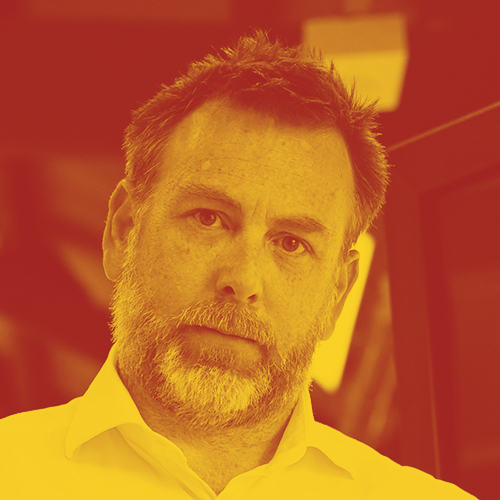Engineers translate the awareness raised by Earth Hour (27 March) advocacy into real-world innovation.
For a long time, engineers and others working in the renewable energy sector felt they were pushing a cart uphill, said Dr Andrew Harris CPEng, Director at Laing O’Rourke and Professor of Chemical and Biomolecular Engineering at the University of Sydney.
“Suddenly, for the first time, it’s become very clear that we’re over the peak of that hill and we’ve begun a nice, gentle downhill run,” Harris said.

“Changes are coming thick and fast. We’re seeing the price point of renewables come right down, in some places, to well below that of baseload coal or fossil-fuel power. Because the economics are better, we’re seeing real, meaningful change.”
Solar, wind and other sources of renewables, coupled with battery storage, offer a reliable and increasingly affordable baseload power that can be used when it’s required, as opposed to when it’s generated, Harris said.
The rise and rise of renewables is no secret. But what has also been occurring in the background is a trickle-down effect from the big-ticket items, such as solar farms, to the sectors, industries, products and brands that feed and support such systems.
This, Harris said, includes sustainability of battery materials, advancements in supply chain models, new solar tech and much more.
There have been excellent examples in resources, Harris said, including modular solar farms being used for baseload power at mines in remote locations, and hydrogen-powered heavy vehicle fleets in the Pilbara.
In the construction and infrastructure sectors, a broad sustainability lens is being applied to projects to ensure materials will offer a significant improvement to whole-of-life performance.
There is also a great deal of exciting innovation coming out of startups, such as green concretes and carbon sequestration processes.
And there’s a professional investment group in the United Kingdom called IP Group, which invests in research that comes out of universities. It has recently added a nuclear fusion technology to its portfolio.
“For that to be on the radar of professional investors is simply extraordinary,” Harris said.
Follow the money
Gloria Chan, Executive Director at the Clean Energy Finance Corporation (CEFC), agreed the money trail is leading directly to a more sustainable energy system.
The CEFC plays a unique role in driving investment in Australia’s transition to lower emissions. CEFC investments, made on behalf of the Australian Government, have attracted $2.50 in private sector capital for every $1 of CEFC finance committed, contributing to projects valued at almost $31 billion.
Five years ago, when she joined the CEFC, large-scale solar was an emerging sector, she said. Working alongside the Australian Renewable Energy Agency (ARENA), the CEFC invested more than $370 million in 10 solar projects as part of its Large Scale Solar Program. Since then, the narrative around renewables has completely changed.
“AEMO (the Australian Energy Market Operator), which is staffed by engineers, developed its inaugural bi-yearly Integrated Systems Plan in 2018 that was essentially a blueprint for the future of the grid, for the next 20 years,” Chan said.
“That inaugural plan, backed by extensive system modelling, found that the lowest-cost form of new generation would be renewables, [which will firm] when it comes to replacing the 63 per cent of coal-powered generation that will reach the end of its technical life by 2040.”
“From a CEFC perspective, we see exciting opportunities here. We’re making major investments in firming and battery storage, including the batteries in South Australia and Victoria.
“We’re also working with TransGrid Services in a landmark investment to support the Snowy 2.0 pumped hydro expansion, one of the largest engineering developments underway.”
Now, more than any time in the past five years, there is a feeling of momentum around renewables, Chan said. Internationally there’s the European Union’s carbon border tax being debated. In the United States, there’s a sense that clean energy has become a top priority under the new administration. China, too, has long been expressing its plans to reduce emissions.
In Australia, Chan said, state-based renewable energy targets, as well as electricity infrastructure roadmaps, point to massive renewable developments and long-duration storage capabilities.
New technologies, such as flexible and lightweight solar panels and grid-forming inverters that overcome voltage disturbances and inertia disturbances, are helping drive the transition to a cleaner electricity grid, Chan said.
A sustainable acceleration
It’s this mix of advancements across sectors, industries, agencies and businesses that creates the type of frantic acceleration we’re now seeing in the clean, renewable energy space.
“The underlying principle here is that everybody overestimates how quickly new technology will appear,” Harris said.
“Gartner publishes an annual Hype Cycle report, and it shows a trough in the middle of each hype cycle. So, we begin with a peak of over-inflated expectations. Then there’s a trough of despair in the middle, where the hard work is done. Then, 10 years after everybody thought it would, it suddenly appears and becomes business as usual.”
He refers to hydrogen as an example. He was conducting research on hydrogen 20 years ago. Now, finally, it is a reality. Australia has a strategy for it, including high-level engagement, advocacy and leadership.
“That applies for a lot of stuff we’re talking about,” he said.
“In some areas, Australia has the capacity to lead. In others, electric vehicles, for example, not so much.”
Engineers have always been at the centre of such developments, but in the future they’re going to have greater roles around advocacy and communication, Harris said.
“When engineers speak, it is with a trusted voice,” he said.
“We have a professional body that advocates, but also that responsibility is going to fall on more of us, as individuals. We have a greater role to play and we must be prepared to advocate for the right things.”
